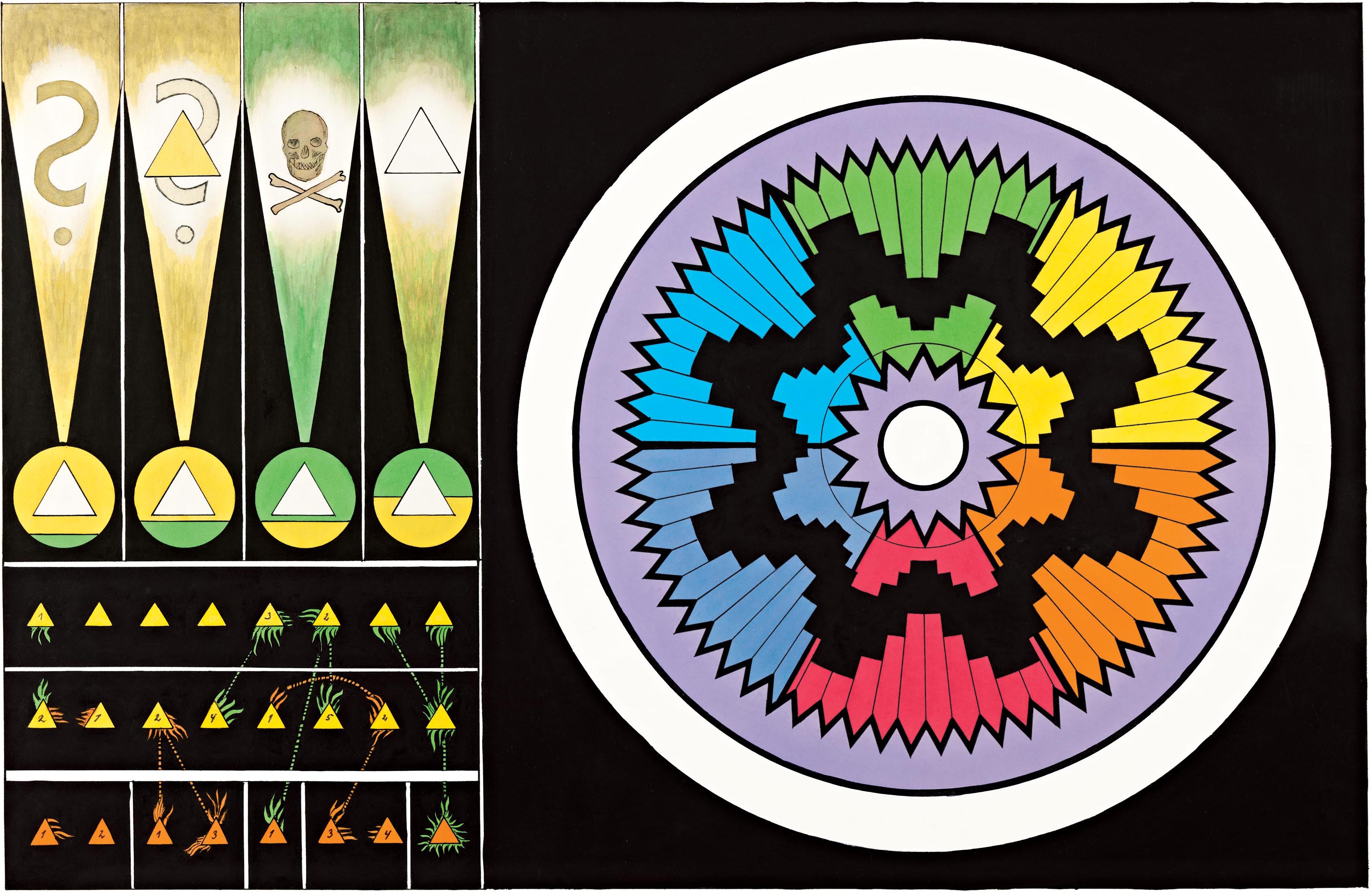The Eternal World Picture, vol. 2
21.12 The next figure from the left symbolises the being's next evolutionary step in its relationship to God.
We see here in the symbol that the intelligence of the being has grown in relation to its feelings.
Here too the relation of the being to God is still borne by the being's religious instinct.
This instinct can give an inkling of God, but no day-conscious facts about him.
Instinct can therefore give rise only to a strong belief in providence or deities.
But with the beginnings of a clearly evident intelligence and of the faculty of humaneness the beings grow out of their previous image of the Godhead.
It no longer fits entirely with their intelligence and feeling.
And a new impulse from the world redemption has given rise to a more humane image of the Godhead.
Through highly developed humane world redeemers primitive, killing views of the Godhead were replaced by humane views of the Godhead.
With the fatherly image of God as pure love that Christ gave the world, the phenomena of killing, revenge and hate, war and animosity and punishment are totally removed from the ideal of divine worship, just as here too there is talk of only one true godhead and not gods in the plural.
Here the real eternal truth has broken through in almost all its clarity.
Belief in the killing and war-hungry gods or highest beings has been transformed into belief in the one true God who has all the power in heaven and on Earth, all the power in the universe and who is omniscient and all-loving.
The yellow triangle in the ray of the being in the symbol symbolises this one true God.
The question mark behind the triangle indicates that the Godhead mentioned is as yet an object of belief.
It has as yet not become an object of knowledge or fact.
The development of the beings' faculties had not yet reached that point when the brilliant ideals of Christianity were given to mankind.

Symbol no. 21
The Eternal, Cosmic and Organic Connection between God and the Son of God – 1
